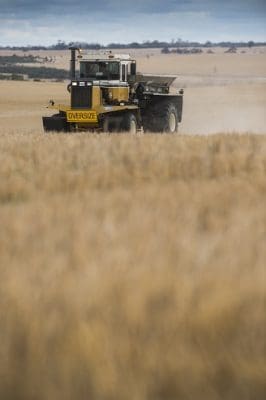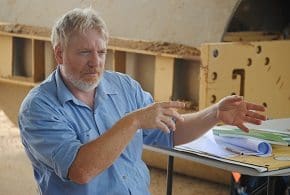LIME use in Western Australian agricultural systems dropped 25 per cent this year and grain growers are encouraged to carefully assess their lime requirements ahead of the 2018 cropping season.

Higher yielding paddocks that only require maintenance liming should be prioritised for lime application, to ensure they do not become more acidic and start losing production. (Photo: Evan Collis Photography)
Soil acidity is estimated to erode potential grain crop yields by up to 13pc, worth $500 million annually.
The issue is widespread, affecting about 11 million hectares in WA – about half of the State’s grainbelt.
WA Department of Primary Industries and Regional Development (DPIRD) researcher Chris Gazey said a combination of factors saw lime sales fall to 1.2 million tonnes prior to the 2017 cropping season, compared with about 1.6Mt for each of the two previous years.
“Reasons included financial constraints caused by low grain prices and frost damage to crops, and a wet summer which saw growers busy spraying weeds and some paddocks made inaccessible for lime trucks,” he said.
“The 2017 growing season has also been very challenging for many growers, but in many cases, investing in a liming program to manage soil acidity will still be achievable and profitable.”
Mr Gazey leads a five-year project looking at new soil amendment options and tillage tactics for soil acidity, in partnership with the University of Western Australia, as part of the Grains Research and Development Corporation (GRDC) investments in Soil constraints – West.
He said the specific lime requirements for different paddocks could be determined by soil testing, with accurate knowledge of the soil pH allowing more precise management decisions.
Soil pH is a measure of the concentration of hydrogen ions (acid) dissolved in the soil water.
“Growers need to know the degree of soil acidity and its depth, and to know the soil pH profile in layers of at least one to 10cm, 10 to 20cm and 20 to 30cm,” he said.
“Topsoil pH can be quite different from the subsurface soil pH and sampling only the topsoil may lead to inadequate lime applications.”
Mr Gazey said subsurface acidity had deepened in many WA cropping soils and recommended growers already sampling at depth should consider obtaining some samples from 30 to 40cm and, in some cases, 40 to 50cm.
He said growers developing a liming plan should consider which paddocks required lime, based on soil testing, and prioritise paddocks.
“Higher yielding paddocks that only require maintenance liming should be prioritised for lime application, to ensure they do not become more acidic and start losing production,” Mr Gazey said.
“Usually the most acidic paddocks also have a range of other subsoil constraints and they probably should not be the ones you tackle first, unless you have already addressed the other issues present.
“When applying lime to paddocks with multiple constraints or when there is soil acidity at depth, using some form of tillage can help to move the lime further down into the profile, removing compaction at the same time.”
Source: GRDC
The GRDC western region ‘Know More’ video ‘Tips to manage subsoil acidity with liming’:




HAVE YOUR SAY